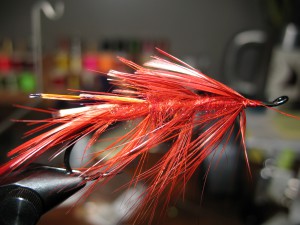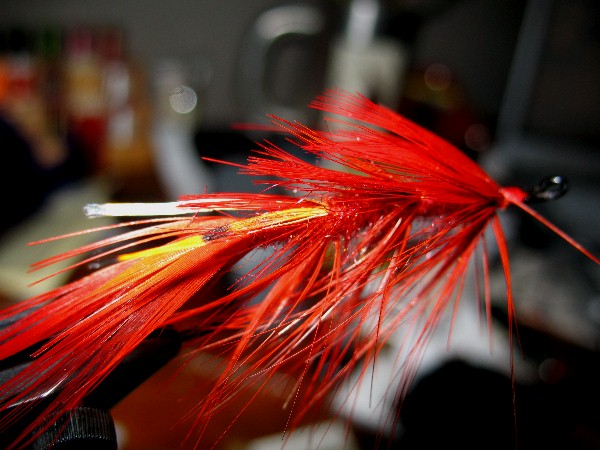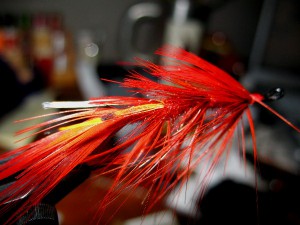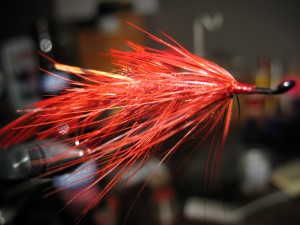Hook: Partridge Bartleet Style Size 2 (depends on preference)
Body: Orange Seal, or Angora Goat
Rib: Sm Oval Tinsel
Hackle: Orange Hackle (long barbs)
Shellback: Red Golden Pheasant Breast
Eyes: Natural Golden Pheasant Tippet
Thread: Orange

It is this time of year where I am sure I look like a kid in a candy store. I literally stand in front of my gear and argue with myself, “Sea-runs? Salmon? Trout? Steelhead?” Then, when a decision is finally made, the car ride out to my agreed upon destination is rife with the pangs of passing by fertile water and thoughts like “Hmm, maybe I should have gone there” or “I wonder how that’s doing now?”
This month’s fly is a somewhat challenging fly to tie, but since we are heading towards the end of the year, I figure everyone is up for the challenge. The General Practitioner is a very well-known fly, but misjudged. When asked to name ten classic salmon fly patterns, I bet the General Practitioner would be on more than one person’s list. While this fly suggests a sort of Dee style fly, its origins are far from what most would call a classic salmon fly. In fact the only real commonality is that this fly was intended for Atlantic salmon.
The General Practitioner was created by Colonel Esmond Drury in 1953 (not the 1800’s). It is a model for most of today’s shrimp imitation patterns, and for good reason. Apparently Drury created this fly after his favorite salmon river’s regulations were changed, forbidding the use of prawns.
Originally tied on a smallish salmon hook, GP’s are fished on a range of hook sizes, and in many different colors.
I am not going to go over every step to tying this fly, I am not sure I could do it in less than 2 pages. I will however, offer advice.
For your first GP, I would suggest taking things slowly. Go online, get a good book, and follow along with the instructions. Lay out all of your materials beforehand so you have them ready to grab. This means clip your pheasant tippets and get them exactly how you want them. When you are tying your fly, do it sections. Tie in your tail, make a half hitch, reset yourself, tie in the back section up to the first set of eyes, or shellback, half hitch, reset. While you are “resetting” look at what you have just done, adjust it and make it just the way you want it before you get too far ahead of that section. You will be surprised how much this technique helps. Another tip for the head of your fly is to smash flat the stem of your final shellback. This makes it easy to tie in and also makes for a smoother head.



